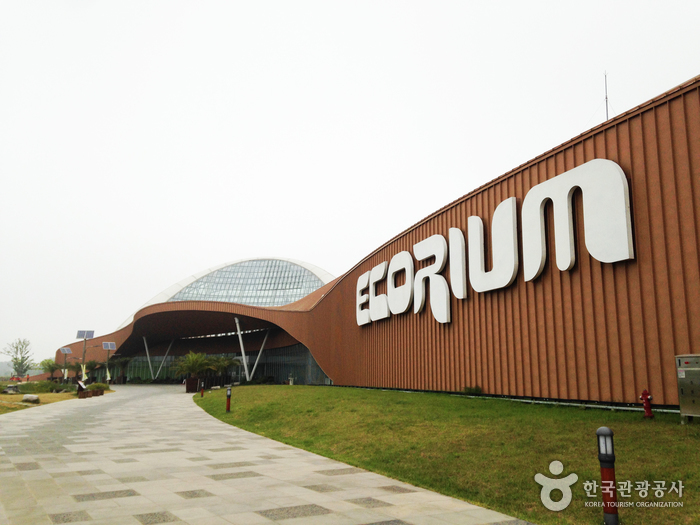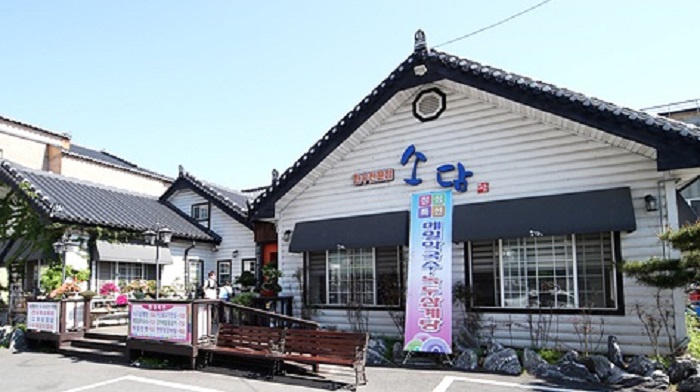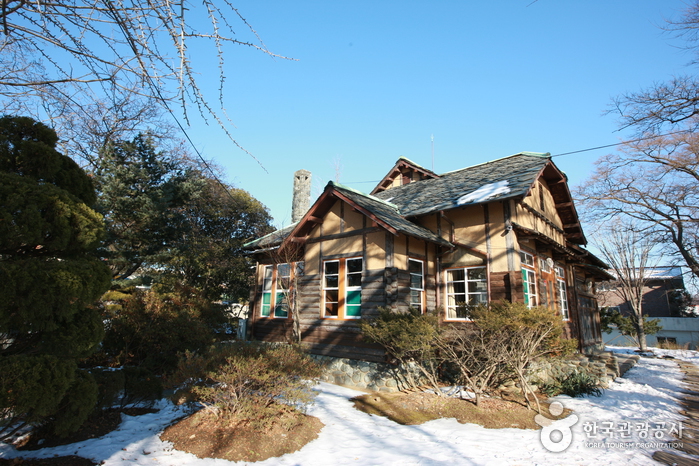National Institute of Ecology - Seocheon (국립생태원(서천))
19.1Km 2020-05-18
1210, Geumgang-ro, Seocheon-gun, Chungcheongnam-do
+82-41-950-5300
National Institute of Ecology is a research, exhibition, and educational center housing various animals and plants from world five climates and regions including the tropics, desert climate, the Mediterranean, temperate climate, and the polar region. Fauna and flora from the Korean Peninsula's ecosystem can also be seen here. The Institute’s Ecorium showcases living ecosystem exhibitions, housing 1,900 plants and 280 animals in an area of 21,000㎡ to help people understand the relations between climate and ecology. The outdoor exhibition area is divided into 5 sections, from Korea’s representative wetland ecological system to various international plants, rare plants grown on the high mountain, Korean representative deer species' habitat space, pond ecology and others. In addition, it offers vivid ecological education through the nearby ecological region and has varied exhibitions and researching facility as well as firsthand programs and events.
Jangjado Island (장자도)
19.4Km 2024-04-07
26-2 , Jangjado 1-gil, Gunsan-si, Jeonbuk-do
+82-63-454-7280
Jangjado Island is one of the Gogunsan Islands, and it is called Jangjado because the legend has it that a strong man was born here. Locals say that, when a fishing boat runs into a storm in the sea, it is safe to take shelter on this island, which is why it is also known as a refuge harbor. Jangjado Island is connected to Seonyudo Island by Jangjagyo Bridge.
Jangjado Island is located in the very center of all Gogunsan Islands and once you climb up to Daejangbong Peak, the 63 Gogunsan Islands unfold before your eyes like a panorama, making it a popular filming spot chosen by the three broadcasting companies as well as the Corean Alpine Club and the Photo Artists Society of Korea. It offers various leisure activities from a mud flat experience and sea fishing to hiking Daejangbong Peak, which is a famous sunrise and sunset watching spot, and cruise tour of the Gogunsan Islands. There are an abundance of delicious dishes including sliced raw fish, spicy braised seafood, noodle soup with clams and stone crabs, and is home to many other tourist attractions such as Jangjadaegyo Bridge with spectacular sunset view, Jangjahalmeonibawi Rock and Daejangdo Dangje, a type of ritual, which is why it is great to visit anytime of the year.
Deoksugung Haemul Kalguksu (덕수궁해물칼국수)
19.4Km 2024-02-28
5, Jangsan-ro 855beon-gil, Maseo-myeon, Seocheon-gun, Chungcheongnam-do
041-956-7066
Located near the Geumgang Estuary Embankment, Deoksugung Haemul Kalguksu serves haemul kalguksku (noodle soup with seafood) full of clams and vegetables. Kalguksu (noodle soup) is made by rolling out a thin flour dough, slicing it into thin strips, and then boiling them in a soup. There’s a variety of kalguksu (noodle soup) dishes on offer, along with wangmandu (jumbo mandu). The broth is clean, thanks to shrimp and fresh vegetables. Don’t miss yeolmu kimchi (young summer radish kimchi), which is served as a side dish in the restaurant and goes perfectly with kalguksu (noodle soup).
SO-DAM(소담)
19.8Km 2021-02-19
15-9, Chungjeol-ro 41beon-gil, Seocheon-eup, Seocheon-gun, Chungcheongnam-do
+82-41-951-7272
This is a Korean cuisine located in Seocheon-gun , Chungcheongnam-doA Korean BBQ restaurant.The representative menu is Grilled Special Cuts.
House of Lee Young-choon (이영춘가옥)
19.9Km 2024-04-07
7, Donggaejeong-gil, Gunsan-si, Jeonbuk-do
+82-63-454-3922
The House of Lee Young-choon was constructed by
a Japanese landlord named Kumamoto during the Japanese colonial era. The house combined Western, Korean, and Japanese into one structure. After Korean liberation, Dr. Lee Young-choon, the first medical doctor, lived in the house. From that time, the house was referred to as the
House of Lee Young-choon.
Thanks to its beautiful exterior, the house was used as a backdrop for films such as Bingjeom, Sandglass, and Yain Shidae, etc.
The doctor was considered the Korean "Albert Schweitzer", and his
pen name of "Ho", referring to ssangcheon,
means "two branches of spring water, represents one for healing physical disease and the other for healing the
spirit. He was born in Yonggang-gun, Pyeongannam-do in October 1903. In 1935,
through a connection by his professor at Pyeongyanggobo School, he took a position
as the head of Jahye Hospital to take care of 20,000 people. In addition, he was the first person
in Korea to implement the policy of school nurses as well as the medical insurance union.




 English
English
 한국어
한국어 日本語
日本語 中文(简体)
中文(简体) Deutsch
Deutsch Français
Français Español
Español Русский
Русский